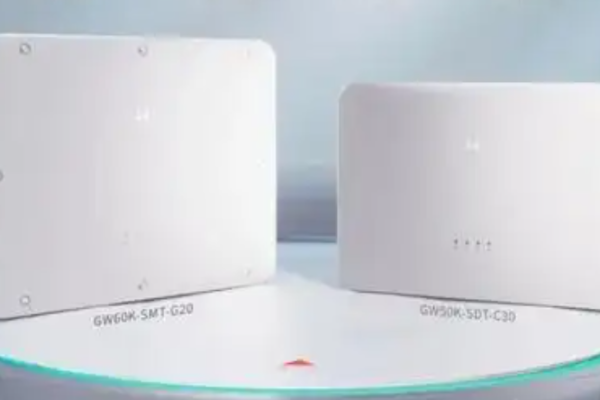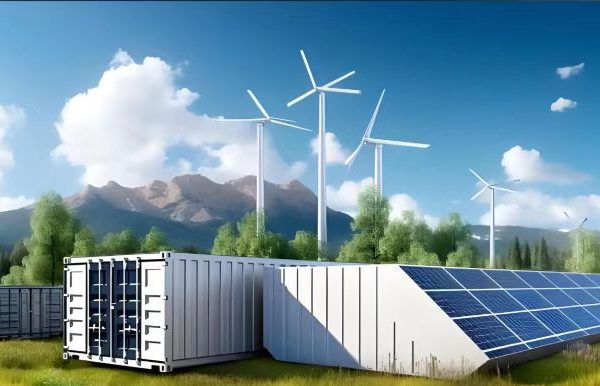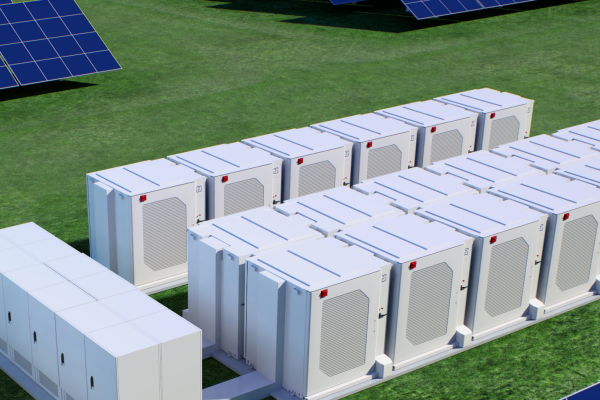Choosing the Right Form Factor for Residential and Light Commercial Projects
In energy storage system (ESS) design, battery chemistry gets most of the attention — LFP vs. NMC, cycle life, C-rate, etc. But there’s one critical aspect that directly affects installation, cooling, maintenance, and space planning: the battery form factor.
For small to medium-sized systems (typically under 100kWh), the choice often comes down to wall-mounted vs. floor-standing batteries.
So how do you choose? In this article, we explore:
- Key differences between wall-mounted and floor-standing formats
- Pros and cons of each type
- Application-specific recommendations
- What buyers and installers should ask before selecting
1. Overview: What Defines Each Form Factor?
Wall-Mounted Battery Systems
- Typically under 10kWh per unit
- Slim, rectangular design (e.g., 480mm × 620mm × 160mm)
- Hung on vertical surfaces like garage walls or indoor storage rooms
- Usually modular for parallel expansion
Examples:
- 5kWh LFP modules with built-in BMS
- Hybrid-ready systems integrated with inverters
Floor-Standing Battery Systems
- Range from 5kWh to 50kWh+ per unit
- Heavier and larger footprint (e.g., 600mm × 700mm × 1200mm)
- Installed on the ground, sometimes wheeled or racked
- May contain multiple battery modules in a cabinet
Examples:
- 15kWh LFP cabinets for small C&I
- Stackable vertical tower units for homes or off-grid cabins
2. Physical & Structural Considerations
| Feature | Wall-Mounted | Floor-Standing |
|---|---|---|
| Weight | Typically < 60 kg | Often > 100 kg per unit |
| Installation | Requires wall anchors and mounting brackets | Freestanding, sometimes bolted to floor |
| Space Usage | Saves floor space | Needs floor clearance and ventilation |
| Mobility | Fixed once installed | Some models can be moved with casters |
| Height Limitations | Limited by vertical reach and wall structure | Flexible stacking or cabinet configurations |
3. Thermal Management & Cooling
Battery lifespan and safety depend heavily on thermal performance. Here’s how cooling compares:
- Wall-mounted units:
Often rely on natural convection, with space between wall and battery for airflow. Overheating can be an issue in small or enclosed rooms. - Floor-standing units:
Better suited for forced-air cooling or integrated thermal systems, especially for higher-capacity systems. Easier to install ventilation ducting or passive air channels.
👉 If ambient temperatures are high (≥ 35°C), floor-standing systems usually handle heat better.
4. Installation Workflow
Wall-Mounted Pros:
- Minimal footprint
- Clean aesthetics, especially for residential
- Simple cabling when installed near hybrid inverter
- Appealing to customers who value design
Wall-Mounted Cons:
- Requires sturdy wall (e.g., concrete or load-bearing structure)
- Not ideal for high-capacity setups (many parallel units = wall clutter)
- More time-consuming installation with height and alignment checks
Floor-Standing Pros:
- Easier to scale — just add more cabinets
- Less structural requirement (only flat floor)
- Better cable management for multiple strings
- Easier access for maintenance
Floor-Standing Cons:
- Takes up more space
- Needs floor-level protection from moisture
- May require lifting equipment during delivery
5. Safety & Compliance
From a safety perspective, here are some points to consider:
- Wall-Mounted Batteries
- Must comply with mounting safety codes (especially in seismic regions)
- Risk of falling if improperly installed
- May require clearance zones from flammable surfaces
- Floor-Standing Batteries
- More stable physically
- Easier to fire-isolate with external cabinets
- Can accommodate integrated fire suppression (e.g., aerosol or gas systems)
Key Tip: Some regions (e.g., California, Germany) have evolving fire codes that limit wall-mounted lithium installations indoors. Always check the local regulation.
6. Real-World Use Cases
✅ Wall-Mounted Best Suited For:
- Residential homes with limited space
- Projects under 10kWh
- Aesthetic-focused installations
- Where inverter and battery are co-located indoors
- Builders offering “smart home” packages
✅ Floor-Standing Best Suited For:
- C&I projects from 15kWh to 100kWh
- Off-grid sites with generator integration
- High-temperature environments
- Multi-string storage systems
- Cases where modularity and future expansion are expected
7. Maintenance & Accessibility
Wall-Mounted:
- Harder to access for internal servicing
- Disassembly often required for inspection
- BMS access may be limited
Floor-Standing:
- Front-panel or top access for easier diagnostics
- BMS and fuse panels often built-in
- Easier for field techs to service without taking down units
8. Visual Design & Customer Preferences
For residential customers, aesthetics matter.
- Wall-mounted units tend to be sleeker and are often white, matte, and square-edged.
- Floor-standing cabinets are typically industrial, grey/black, with cooling vents.
💡 If the battery is in a visible area (like inside a garage or near a utility room), wall-mounts may be preferred for their design. For hidden installations, function typically trumps form.
9. Pricing Differences
You might assume wall-mounted units are cheaper — but this isn’t always true.
| Type | Approx Cost per kWh (retail) |
|---|---|
| Wall-Mounted (LFP) | $350–$450 |
| Floor-Standing (15–30kWh) | $280–$400 |
Floor-standing systems benefit from economies of scale at higher capacities. But wall-mounted batteries integrated with inverters may reduce BOS costs (no extra wiring, mounting, or enclosures).
10. What to Ask Before Choosing:
- How much space is available — vertically and on the ground?
- Will the battery be installed indoors or outdoors?
- What is the target capacity? (≤10kWh vs. ≥15kWh)
- Does the site have a suitable load-bearing wall?
- How often will maintenance be needed?
- Are there expansion plans in the future?
- Will the installation be customer-facing or hidden?
Summary: Choose for Function, Then Form
| Criteria | Wall-Mounted | Floor-Standing |
|---|---|---|
| Aesthetics | ✅ | ❌ |
| Space-Saving | ✅ | ❌ |
| Large Capacity | ❌ | ✅ |
| Thermal Management | ❌ | ✅ |
| Maintenance Access | ❌ | ✅ |
| Expansion Flexibility | ❌ | ✅ |
| Residential Fit | ✅ | ✅ |
| C&I Fit | ❌ | ✅ |
Ultimately, both types have strong use cases. Your role as a technical trade partner is to ask the right questions, present trade-offs clearly, and help clients choose the right solution based on real installation conditions.









